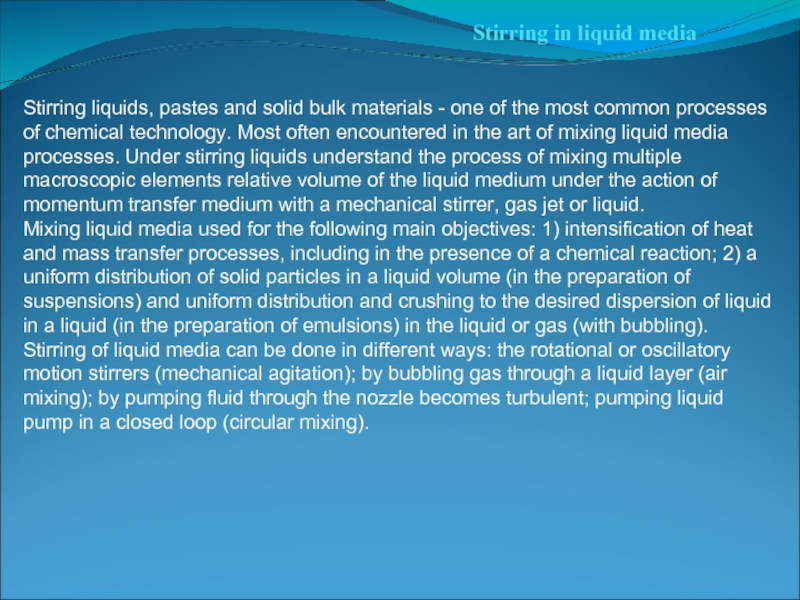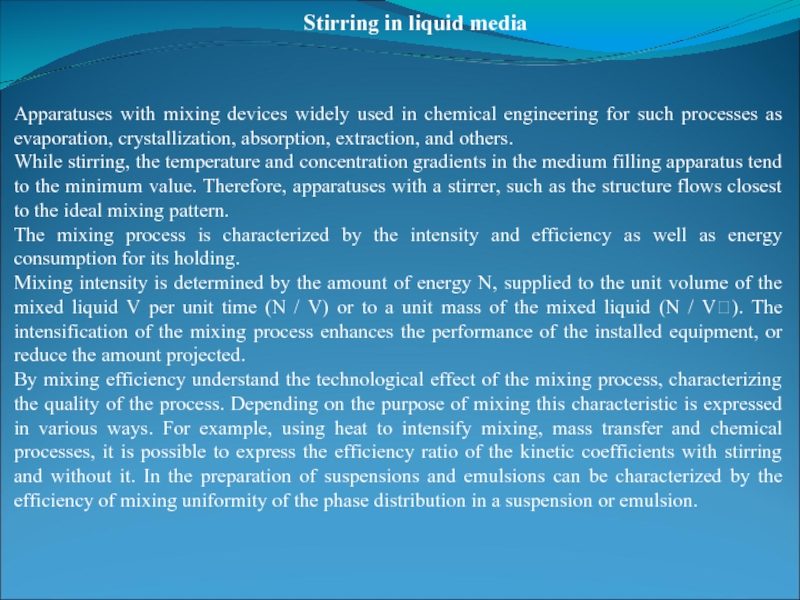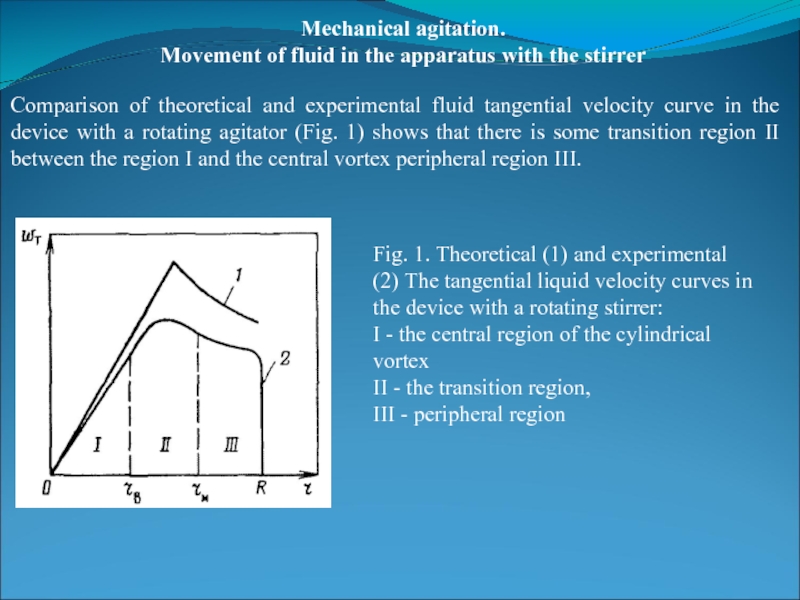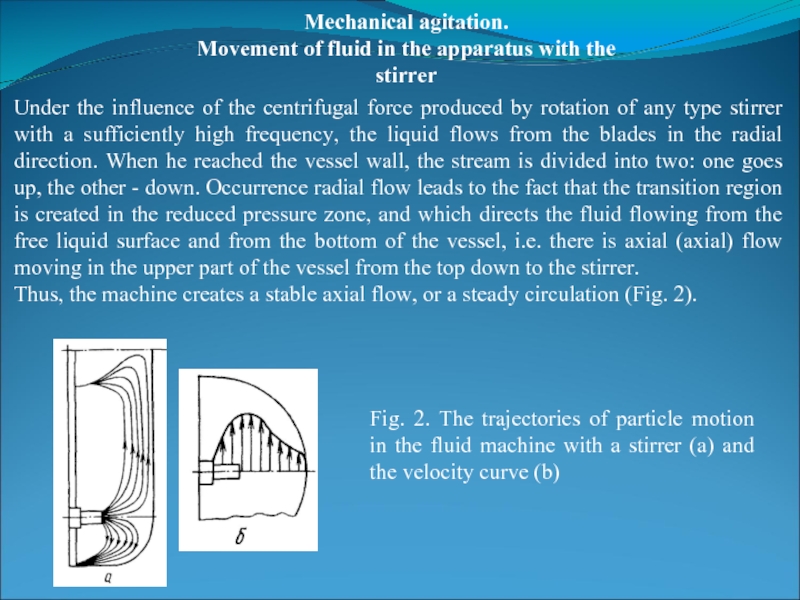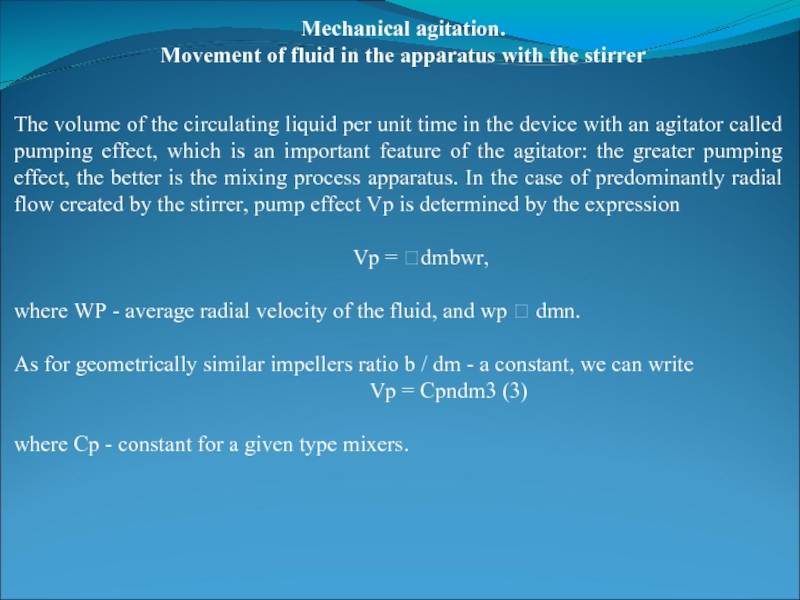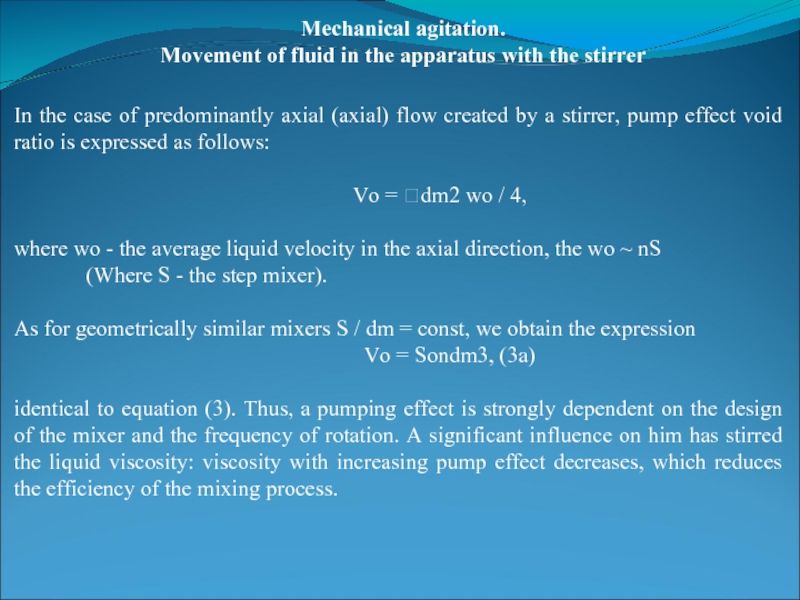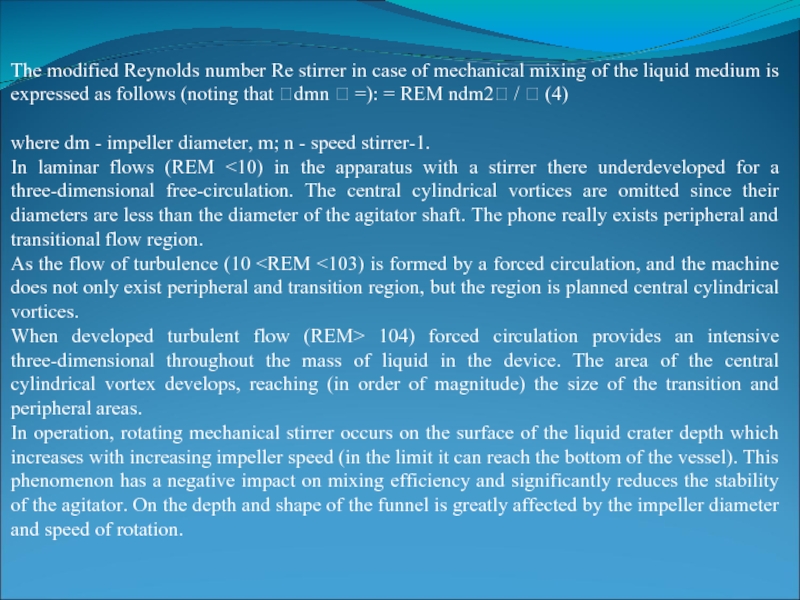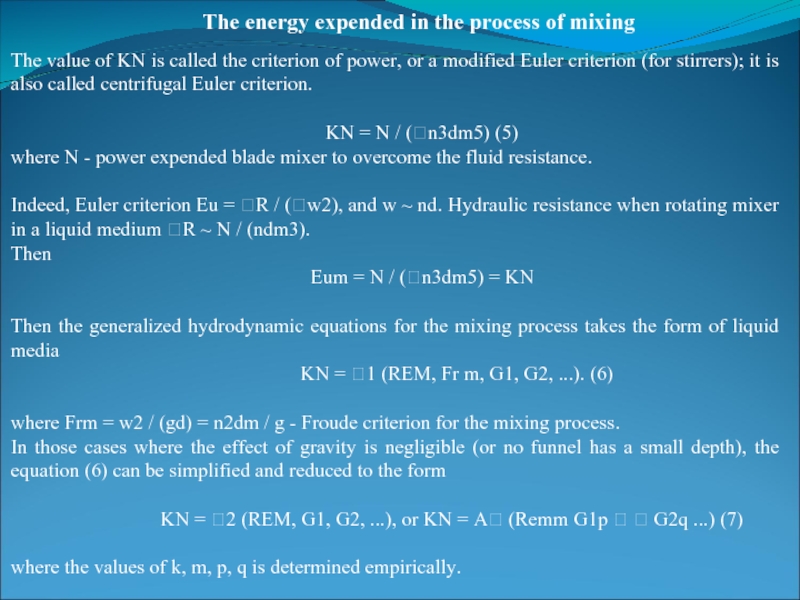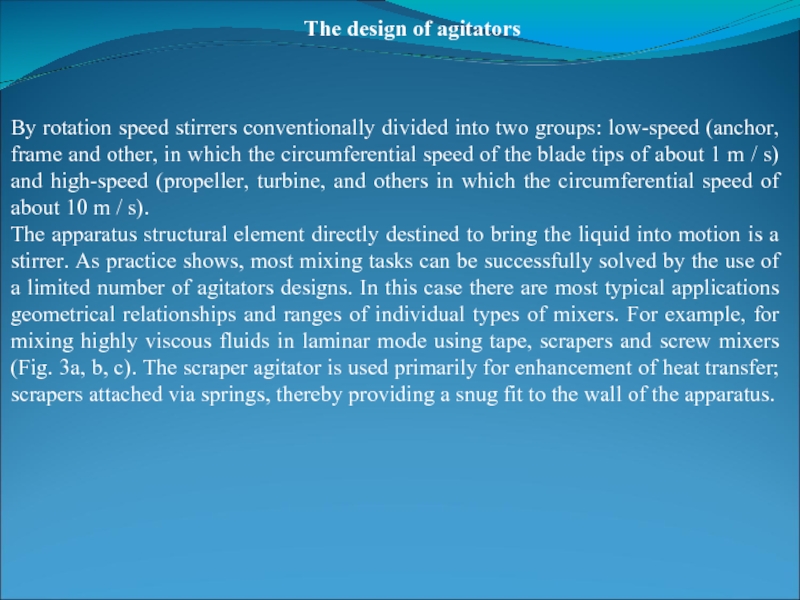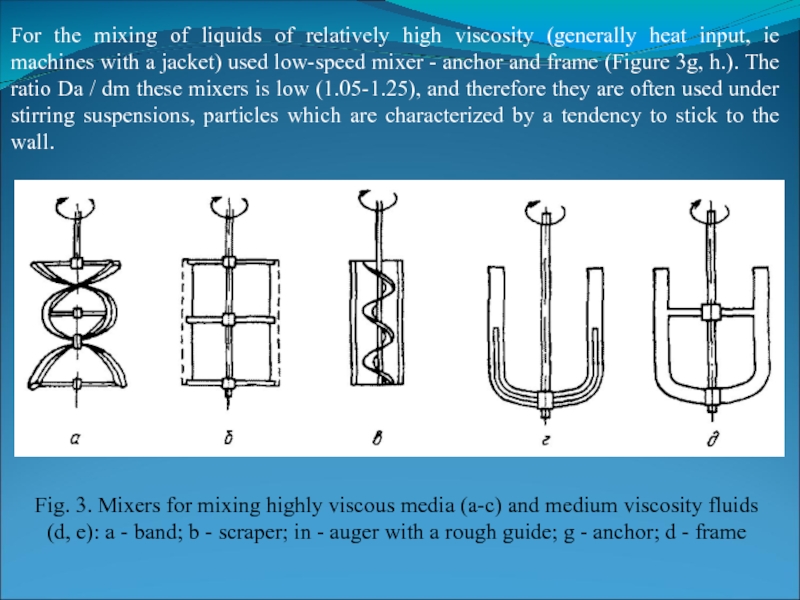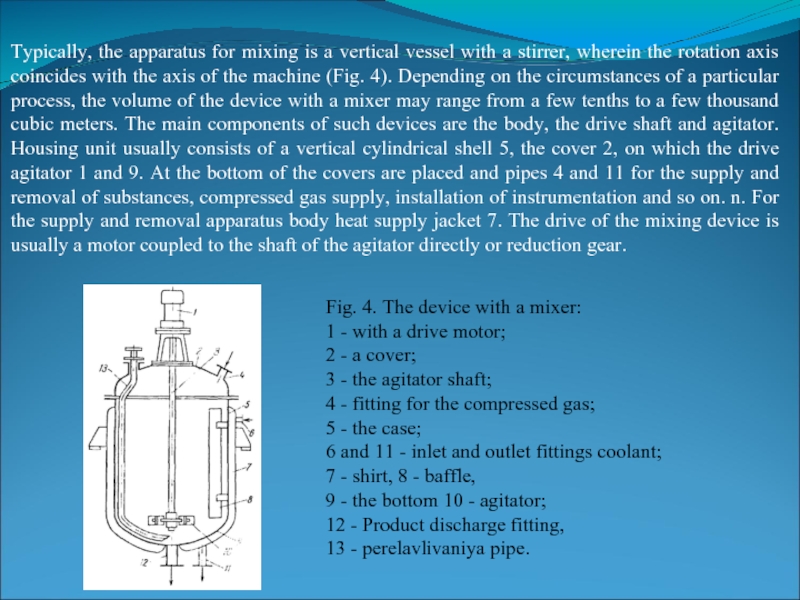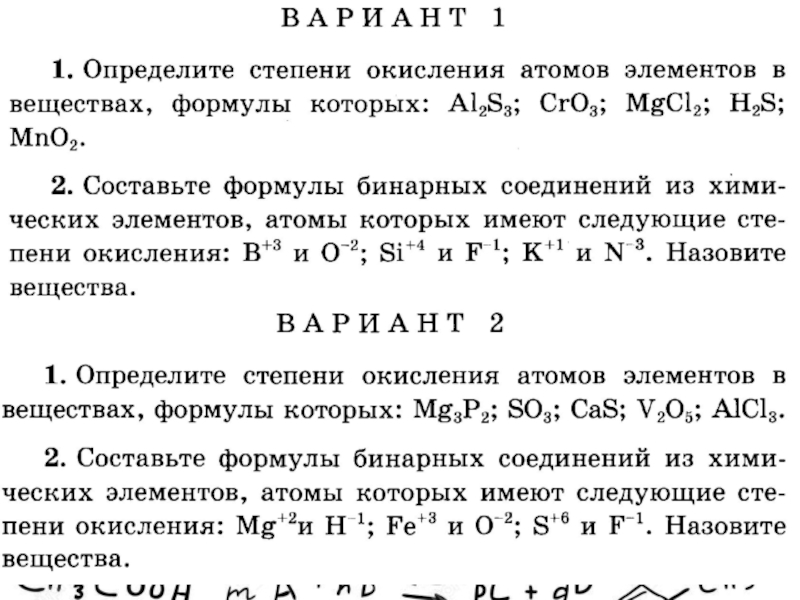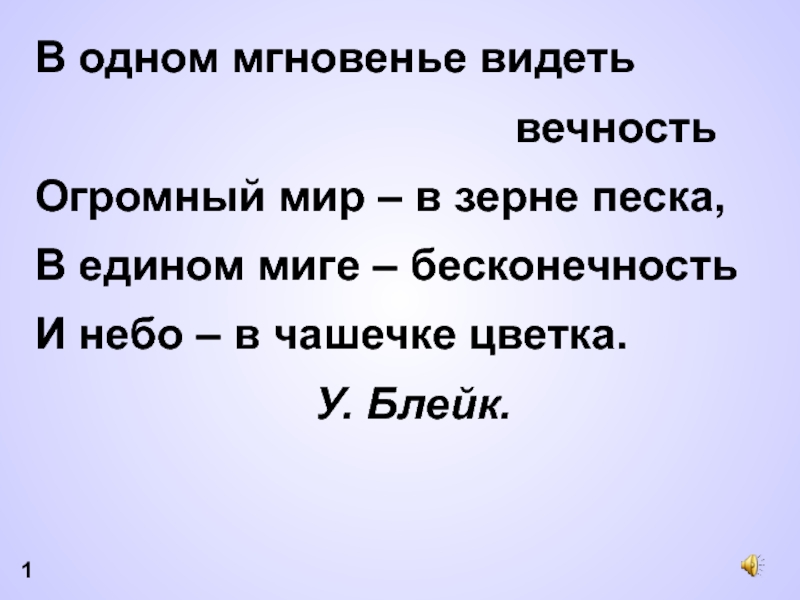- Главная
- Разное
- Дизайн
- Бизнес и предпринимательство
- Аналитика
- Образование
- Развлечения
- Красота и здоровье
- Финансы
- Государство
- Путешествия
- Спорт
- Недвижимость
- Армия
- Графика
- Культурология
- Еда и кулинария
- Лингвистика
- Английский язык
- Астрономия
- Алгебра
- Биология
- География
- Детские презентации
- Информатика
- История
- Литература
- Маркетинг
- Математика
- Медицина
- Менеджмент
- Музыка
- МХК
- Немецкий язык
- ОБЖ
- Обществознание
- Окружающий мир
- Педагогика
- Русский язык
- Технология
- Физика
- Философия
- Химия
- Шаблоны, картинки для презентаций
- Экология
- Экономика
- Юриспруденция
Stirring in liquid media презентация
Содержание
- 1. Stirring in liquid media
- 2. Stirring in liquid media Apparatuses with mixing
- 3. Mechanical agitation. Movement of fluid in the
- 4. Mechanical agitation. Movement of fluid in the
- 5. Mechanical agitation. Movement of fluid in the
- 6. Mechanical agitation. Movement of fluid in the
- 7. Mechanical agitation. Movement of fluid in the
- 8. The modified Reynolds number Re stirrer in
- 9. The energy expended in the process of
- 10. The design of agitators By rotation speed
- 11. For the mixing of liquids of relatively
- 12. Typically, the apparatus for mixing is a
Слайд 1Stirring in liquid media
Stirring liquids, pastes and solid bulk materials -
Mixing liquid media used for the following main objectives: 1) intensification of heat and mass transfer processes, including in the presence of a chemical reaction; 2) a uniform distribution of solid particles in a liquid volume (in the preparation of suspensions) and uniform distribution and crushing to the desired dispersion of liquid in a liquid (in the preparation of emulsions) in the liquid or gas (with bubbling).
Stirring of liquid media can be done in different ways: the rotational or oscillatory motion stirrers (mechanical agitation); by bubbling gas through a liquid layer (air mixing); by pumping fluid through the nozzle becomes turbulent; pumping liquid pump in a closed loop (circular mixing).
Слайд 2Stirring in liquid media
Apparatuses with mixing devices widely used in chemical
While stirring, the temperature and concentration gradients in the medium filling apparatus tend to the minimum value. Therefore, apparatuses with a stirrer, such as the structure flows closest to the ideal mixing pattern.
The mixing process is characterized by the intensity and efficiency as well as energy consumption for its holding.
Mixing intensity is determined by the amount of energy N, supplied to the unit volume of the mixed liquid V per unit time (N / V) or to a unit mass of the mixed liquid (N / V). The intensification of the mixing process enhances the performance of the installed equipment, or reduce the amount projected.
By mixing efficiency understand the technological effect of the mixing process, characterizing the quality of the process. Depending on the purpose of mixing this characteristic is expressed in various ways. For example, using heat to intensify mixing, mass transfer and chemical processes, it is possible to express the efficiency ratio of the kinetic coefficients with stirring and without it. In the preparation of suspensions and emulsions can be characterized by the efficiency of mixing uniformity of the phase distribution in a suspension or emulsion.
Слайд 3Mechanical agitation.
Movement of fluid in the apparatus with the stirrer
In industry
For the rotational motion of a fluid system of Navier-Stokes equations can be written as follows:
? (1)
where WT - the tangential component of the velocity.
In the case of a flat rotary motion about the axis z (WP = 0, wa = 0), the system (1) has a general solution: WT = C1r + C2 / r (2)
For r = 0, WT = 0 and C2 = 0, respectively, for the region, located in the center of a rotating mass of fluid, the steady movement wr = r (where - the angular velocity). Thus, along the axis of rotation of the liquid in the region 0
Слайд 4Mechanical agitation.
Movement of fluid in the apparatus with the stirrer
Comparison of
Fig. 1. Theoretical (1) and experimental (2) The tangential liquid velocity curves in the device with a rotating stirrer:
I - the central region of the cylindrical vortex
II - the transition region,
III - peripheral region
Слайд 5Mechanical agitation.
Movement of fluid in the apparatus with the stirrer
Under the
Thus, the machine creates a stable axial flow, or a steady circulation (Fig. 2).
Fig. 2. The trajectories of particle motion in the fluid machine with a stirrer (a) and the velocity curve (b)
Слайд 6Mechanical agitation.
Movement of fluid in the apparatus with the stirrer
The volume
Vp = dmbwr,
where WP - average radial velocity of the fluid, and wp dmn.
As for geometrically similar impellers ratio b / dm - a constant, we can write
Vp = Cpndm3 (3)
where Cp - constant for a given type mixers.
Слайд 7Mechanical agitation.
Movement of fluid in the apparatus with the stirrer
In the
Vo = dm2 wo / 4,
where wo - the average liquid velocity in the axial direction, the wo ~ nS
(Where S - the step mixer).
As for geometrically similar mixers S / dm = const, we obtain the expression
Vo = Sondm3, (3a)
identical to equation (3). Thus, a pumping effect is strongly dependent on the design of the mixer and the frequency of rotation. A significant influence on him has stirred the liquid viscosity: viscosity with increasing pump effect decreases, which reduces the efficiency of the mixing process.
Слайд 8The modified Reynolds number Re stirrer in case of mechanical mixing
where dm - impeller diameter, m; n - speed stirrer-1.
In laminar flows (REM <10) in the apparatus with a stirrer there underdeveloped for a three-dimensional free-circulation. The central cylindrical vortices are omitted since their diameters are less than the diameter of the agitator shaft. The phone really exists peripheral and transitional flow region.
As the flow of turbulence (10
In operation, rotating mechanical stirrer occurs on the surface of the liquid crater depth which increases with increasing impeller speed (in the limit it can reach the bottom of the vessel). This phenomenon has a negative impact on mixing efficiency and significantly reduces the stability of the agitator. On the depth and shape of the funnel is greatly affected by the impeller diameter and speed of rotation.
Слайд 9The energy expended in the process of mixing
The value of KN
KN = N / (n3dm5) (5)
where N - power expended blade mixer to overcome the fluid resistance.
Indeed, Euler criterion Eu = R / (w2), and w ~ nd. Hydraulic resistance when rotating mixer in a liquid medium R ~ N / (ndm3).
Then
Eum = N / (n3dm5) = KN
Then the generalized hydrodynamic equations for the mixing process takes the form of liquid media
KN = 1 (REM, Fr m, G1, G2, ...). (6)
where Frm = w2 / (gd) = n2dm / g - Froude criterion for the mixing process.
In those cases where the effect of gravity is negligible (or no funnel has a small depth), the equation (6) can be simplified and reduced to the form
KN = 2 (REM, G1, G2, ...), or KN = A (Remm G1p G2q ...) (7)
where the values of k, m, p, q is determined empirically.
Слайд 10The design of agitators
By rotation speed stirrers conventionally divided into two
The apparatus structural element directly destined to bring the liquid into motion is a stirrer. As practice shows, most mixing tasks can be successfully solved by the use of a limited number of agitators designs. In this case there are most typical applications geometrical relationships and ranges of individual types of mixers. For example, for mixing highly viscous fluids in laminar mode using tape, scrapers and screw mixers (Fig. 3a, b, c). The scraper agitator is used primarily for enhancement of heat transfer; scrapers attached via springs, thereby providing a snug fit to the wall of the apparatus.
Слайд 11For the mixing of liquids of relatively high viscosity (generally heat
Fig. 3. Mixers for mixing highly viscous media (a-c) and medium viscosity fluids (d, e): a - band; b - scraper; in - auger with a rough guide; g - anchor; d - frame
Слайд 12Typically, the apparatus for mixing is a vertical vessel with a
Fig. 4. The device with a mixer:
1 - with a drive motor;
2 - a cover;
3 - the agitator shaft;
4 - fitting for the compressed gas;
5 - the case;
6 and 11 - inlet and outlet fittings coolant;
7 - shirt, 8 - baffle,
9 - the bottom 10 - agitator;
12 - Product discharge fitting,
13 - perelavlivaniya pipe.
